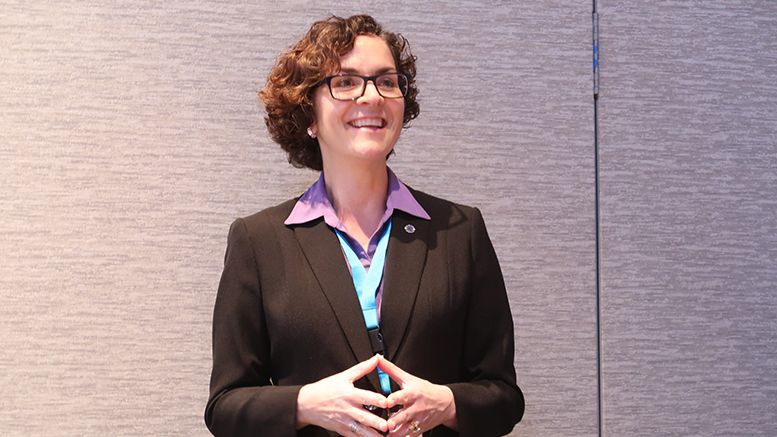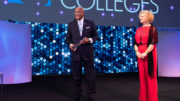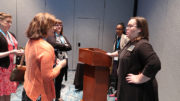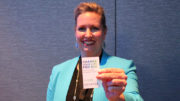ORLANDO, Fla. – College administrators aspiring to the presidency should cultivate mentors and gain experience in as many college activities as possible. And once they get the job, they should listen before acting and learn about the campus culture.
That’s some of the advice new presidents shared at several sessions this week at the American Association of Community Colleges annual convention.
When Barbara Gaba was up for the position of president of Atlantic Cape Community College in New Jersey, the board was impressed that she had 40 years of experience in higher education, including stints as provost and associate vice president for academic affairs at Union County College in New Jersey.
Gaba prepared for the presidency by attending leadership sessions at AACC conventions. She also did an inventory of her skills and decided her weakest area was in budget and finance. To compensate for that, she volunteered to work on those areas with nonprofit organizations, such as the local chamber of commerce.
Gaba added that it’s important to have a mentor who can “be a champion for you.” Her mentor sent her relevant articles and took her to conferences.
“Take advantage of every opportunity afforded to you, even if you don’t understand why they are sending you to a certain conference,” advised Carlos Morales, who was hired to develop and be the first president of the new TCC Connect, the online campus in the Tarrant County College District in Texas.
Leverage your experiences
Rowena Tomaneng had been a faculty member and administrator at De Anza College in California before being appointed president of Berkeley City College (California) several years ago.
“The ability to work across campus units is key in the administrative pathway,” said Tomaneng, who eventually moved up to vice president of instruction at De Anza. That gave her responsibility for supervising programs she had founded, such as a civic and community engagement institute and an inclusion initiative.
In that role, she oversaw multiple federal and state grants, which gave her budget and finance experience.
AACC Leadership Suite: Check out leadership development opportunities available this summer, such as the AACC John E. Roueche Future Leaders and AACC Future Presidents institutes.
Tomaneng was asked to participate in two fellowships sponsored by the Campus Compact, a one-year program for people of color and a two-year national emerging scholars program focusing on civic engagement in community colleges.
“Both of those experiences gave me an alternative way of thinking about leadership,” Tomaneng said. They offered a broader perspective of higher education and a chance to build long-lasting relationships with peers whom she still turns to for support.
The right fit
Marta Yera Cronin was a K-12 teacher, college faculty member, dean and vice president of academic affairs before moving across the country for the presidency at Columbia Gorge Community College in Oregon. Cronin never planned to be a president – she was happy being a vice president – but said joining the National Community College Hispanic Council, which is affiliated with AACC, “totally flipped my thinking.”
She realized it was a “social responsibility” as there were too few women and Hispanic college presidents. When aspiring to the presidency, “there had to be another reason other than it’s the next rung,” she said.
Once you become a vice president, expect recruitment to follow, Cronin said, so when deciding where you want to work, decide what drives you. For herself, Cronin felt Columbia Gorge would be a good fit as it was a Hispanic-serving institution and had many lower-income students. Her ability to speak Spanish was a plus.
To ensure a good fit, “take time to do some soul searching to figure out your strengths and align yourself with what the institution wants,” advised Lisa Skari, president of Mt. Hood Community College in Oregon.
Skari had an extensive background in advancement, marketing and fundraising, but didn’t have much experience in instruction when she was named president.
It took Skari seven years to decide she wanted to be a president. When she got to that point, she felt she was not only ready for that but “had the desire to have an impact on students.” She was selective about wanting to be at a college with strong community engagement.
Own it
For many years, Tim Cook’s goal was to be the dean of students. But after being appointed vice president of instruction, he began aspiring to the presidency. Being put in charge the accreditation process was a big help in learning about all aspects of the college, he said.
When he realized the president at his college in Washington state wasn’t going to retire any time soon, he decided to apply for the top spot at Clackamas Community College in Oregon.
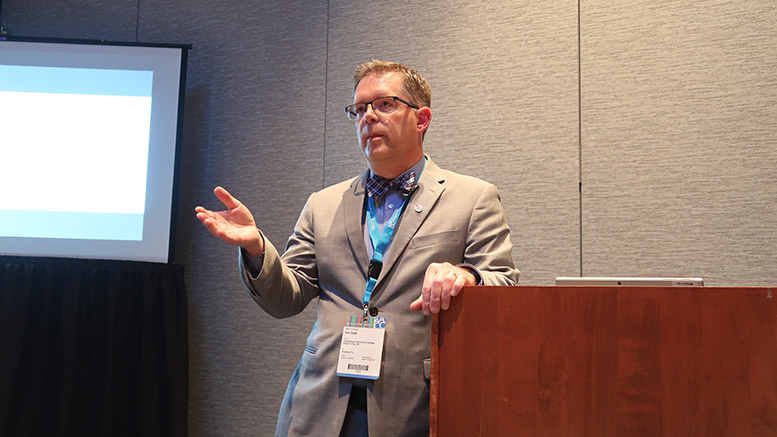
Tim Cook, president of Clackamas Community College (Oregon)
He was told to have a clear story about why he would be a good fit for that college.
The fact that the college was in his hometown “was a really important narrative,” Cook said. “I had to learn quickly how to own it.” He still had a lot of connections there, including a former roommate who was a state legislator and a friend who went to high school with a board member.
Cook credits his habit of sending personal, handwritten notes to everyone he met during the job interview process as a big help in beating the competition.
First steps
Once hired, “you will see things you want to change right away, but you need to spend some time listening before you act,” Morales said.
He spent the first few weeks taking a “listening tour” on campus, meeting with his peers and developing a concept plan for the new online college. He said it was important to get buy-in from the executive leadership, not just the chancellor.
Tomaneng also took a listening tour, where she learned that the faculty senate and other employee groups operated differently from those at her previous college. She also set up regular monthly meetings with union leaders and other groups and learned how the administrative processes work.
While she felt the social justice mission of the college was a good fit for her, she found there wasn’t much engagement and that some groups didn’t trust a new president asking them what they thought.
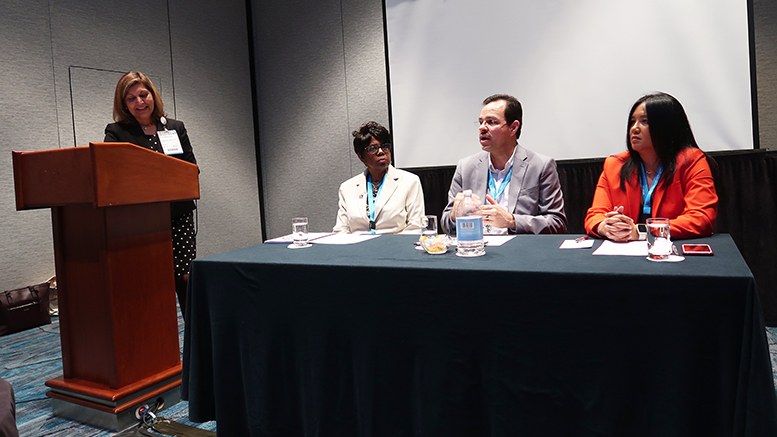
(From the left) Zarina Blackenbaker, president of the Tarrant County College Northeast Campus (Texas); Barbara Gaba, president of Atlantic Cape Community College (New Jersey); Carlos Morales, president of TCC Connect at the Tarrant Community College District; and Rowena Tomaneng, president of Berkeley City College (California).
Sometimes a new president starts in tough times and needs to make some tough decisions. When Gaba started her presidency in February 2017, Atlantic Cape was in bad shape financially. Four casinos in nearby Atlantic City had closed, the area had one of the highest foreclosure rates in the country, and people were moving away.
As a result, enrollment dropped sharply at the college, and Gaba had to lay off 21 people within the first 60 days. “It was very painful,” she said, but “I had to do the right thing for the institution.”

